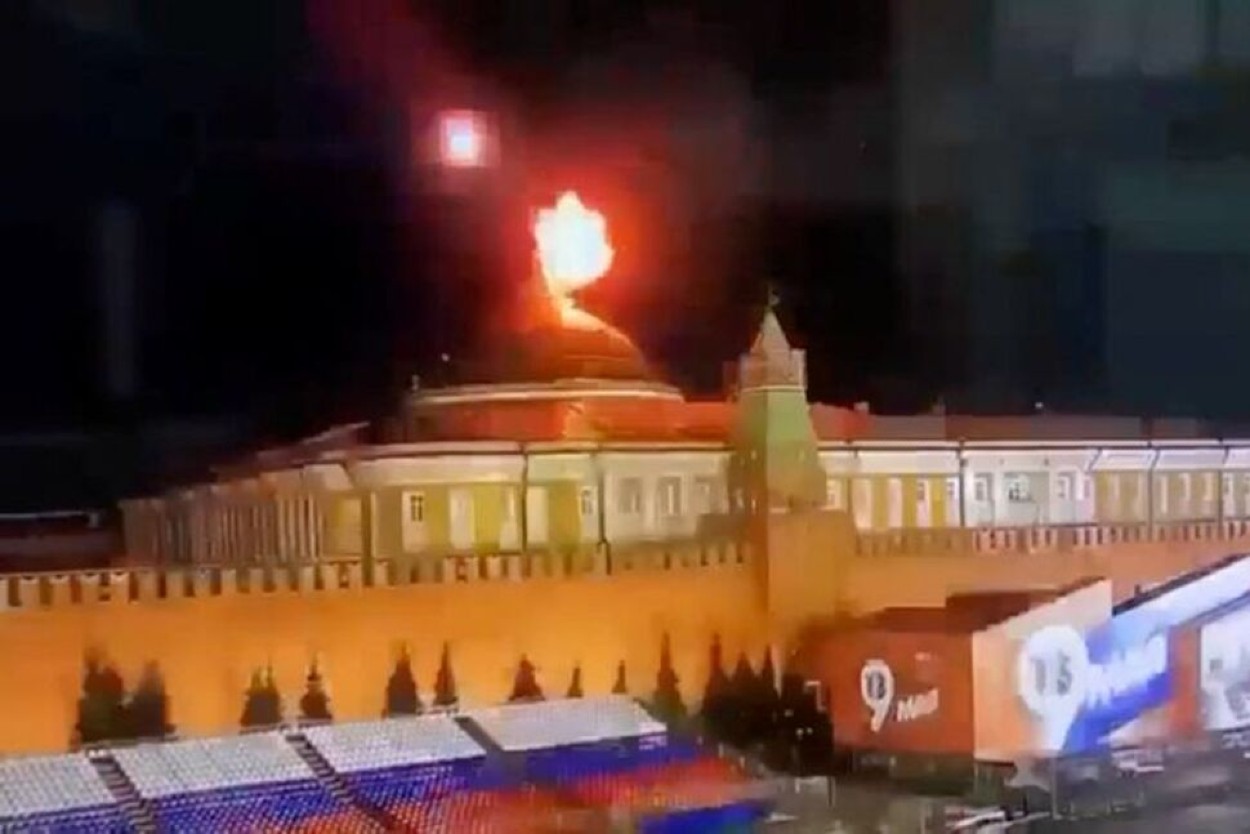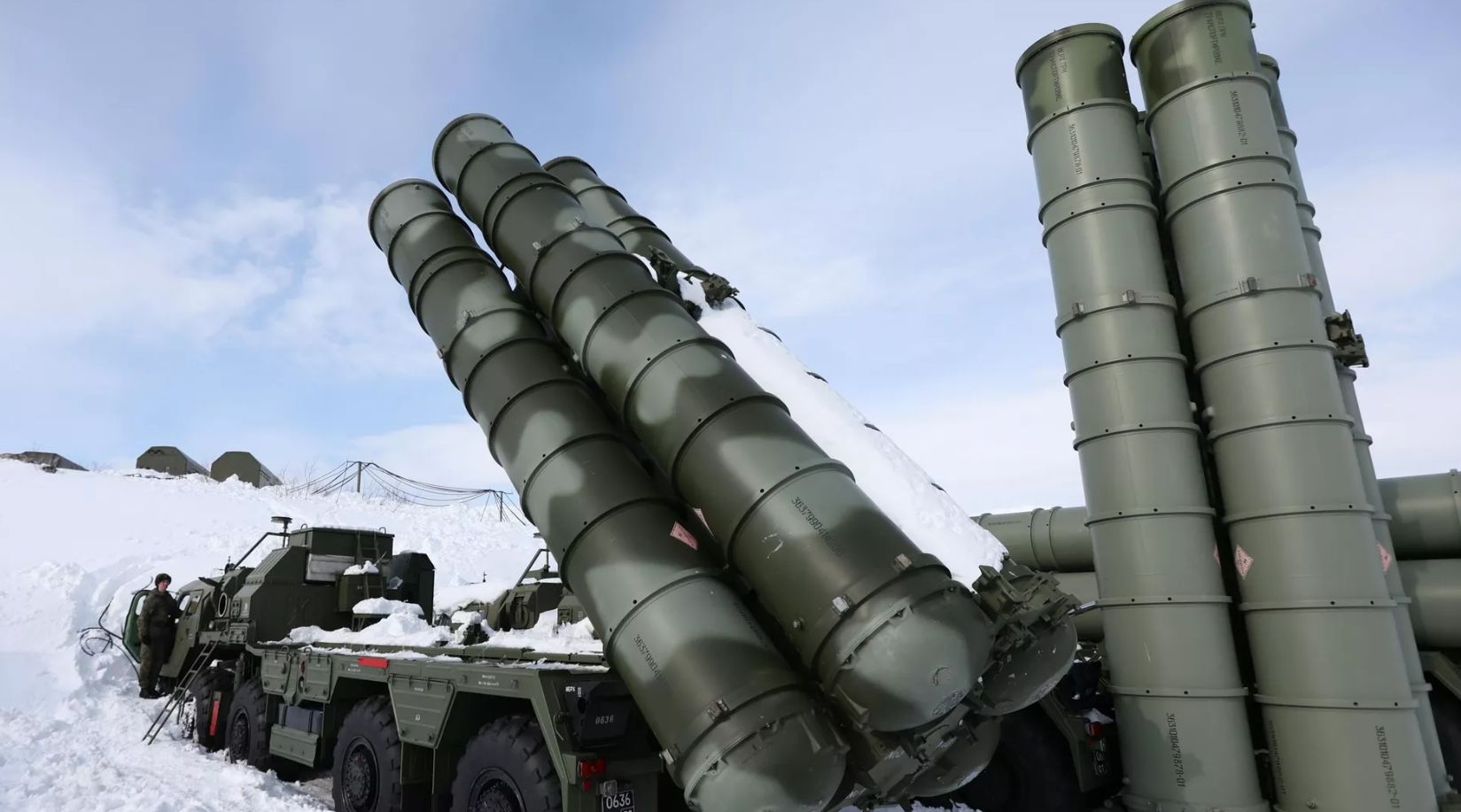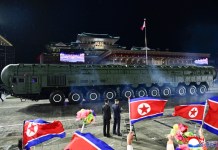Russia’s highly sophisticated S-400 air-defense system is reportedly being utilized to intercept US-made HIMARS or, in a rather unusual move, to launch attacks on Ukrainian cities.
US, France ‘Rattled’ By Strong Iran, Tehran Says; Experts Believe Khorramshahr-4 Missile ‘Based On’ Hwasong-10 IRBM
Moscow is reportedly using this tactic as evidence of Ukraine’s weak air force, suggesting that the Russian troops can afford to expend costly anti-aircraft missiles on secondary operations.
However, the underlying reason is more likely rooted in desperation and frustration, compelling the Kremlin to employ all available weapons, regardless of their suitability for the intended task.
Previously, reports indicate that the advanced Russian air defense system, the S-400, has been deployed in the Donbas region to intercept HIMARS rockets.
While the development of intercepting the lethal HIMARS rockets may seem somewhat predictable, it aligns with the intended purpose of modern surface-to-air missile systems (SAMs), designed to effectively counter a wide array of missiles and aircraft.
Key Strategic Assets In Russia At Risk
The United Kingdom’s Ministry of Defense (MOD) recently claimed that Russian leaders are showing apprehension about the continued vulnerability of their air defense systems to drone attacks.
In an intelligence update on May 15, the Ministry of Defense (MoD) revealed its assessment of a drone attack on May 3 at Russia’s Seshcha Airbase, around 93 miles north of the Ukrainian border.
The MoD alleged that several unmanned aerial vehicles (UAVs) were involved in the strike. However, Ukraine’s military did not confirm its participation in such assaults on Russian soil.
The Kremlin has leveled accusations against Ukraine, holding them responsible for previous attacks on Russian territory. One prominent allegation is an alleged assassination attempt on Russian President Vladimir Putin involving a failed drone strike earlier this month.
Furthermore, there have been well-documented drone attacks in December, with two separate strikes targeting Russia’s Engels airbase, located deep within the country.
Latest Defence Intelligence update on the situation in Ukraine – 15 May 2023.
Find out more about Defence Intelligence's use of language: https://t.co/MGwmuNjs6P
?? #StandWithUkraine ?? pic.twitter.com/Y1CpyDzOTN
— Ministry of Defence ?? (@DefenceHQ) May 15, 2023
According to the UK MoD, during the attack that took place on May 3, it is believed that a Russian military transport aviation An-124 heavy transport aircraft may have sustained damage.
Seshcha, located in western Russia, serves as a crucial hub for military transport aviation. As per the intelligence assessment, this base has played a significant role in facilitating Russia’s complete invasion of Ukraine.
Additionally, it has been reported that Russia utilizes this site as a launching point for kamikaze drones manufactured in Iran, which are directed toward the Ukrainian capital, Kyiv.
“Russian leaders will be concerned that Russia’s air defenses continue to be compromised, holding key strategic assets such as VTA bases at risk,” the ministry added.
The intelligence update has further mentioned that Russia’s military transport aviation is a well-resourced and crucial element of the country’s Air Force, providing vital transportation across the vast expanse of Russia.

Defense specialist Mike Mihajlovic, in a conversation with EurAsian Times, voiced skepticism regarding UK intelligence, highlighting flaws in their briefings and suggesting that they are filtered to align with political agendas.
Mihajlovic emphasized there is no impenetrable air defense system, and Russia cannot guard every kilometer of its 60,000-kilometer-long border. The key is to concentrate on the most important areas, and although drones or cruise missiles can penetrate the defense system, they may not always hit their target.
Mihajlovic believes that Russia is more than capable of defending its strategic assets. He further stated that Russia has been aware of UK Storm Shadow since 2018, and all the necessary information and characteristics have already been integrated into the fire control and tracking radars.
Mihajlovic acknowledges that some threats may pass, but the Russian defense system is multilayered, and if one layer fails, another will intercept the incoming threat. He stated that “the ongoing war is an opportunity to test existing technologies, and the UK is trying to do just that. Russia is a serious enemy, unlike Yugoslavia, Iraq, Libya, etc.”
Nonetheless, the latest intelligence update sheds light on the ever-evolving nature of modern warfare and highlights the increasing significance of unmanned aerial vehicles in modern military operations.
Russia’s S-400 Air Defense System
Neither side has managed to attain air superiority in the ongoing conflict, particularly as the war has primarily focused on the Donbas region.
As a result, both sides have developed a reasonably robust air defense network, which has severely restricted aircraft operations and limited the ability of ground forces to receive air support.
However, the persistent drone attacks launched by Ukraine deep within Russian territory have exposed significant weaknesses in Russia’s air defense systems. These attacks have conveyed to Moscow that its strategic assets far from the active combat zone are not immune to the determined and emboldened Ukrainian military.
Shashank Joshi, visiting fellow at the Department of War Studies at King’s College London and defense editor at The Economist, shared his perspective with the EurAsian Times.
According to Joshi, Ukraine has showcased its capability to carry out significant strikes on Russian cities and air bases, including those deep within Russian territory. This raises substantial concerns about the effectiveness and reliability of Russian air defenses.
The expert’s assessment emphasizes the critical need to address the integrity and robustness of Russia’s air defense systems in light of Ukraine’s demonstrated ability to penetrate deep into Russian airspace.
Meanwhile, amid these ongoing attacks, there is a notable curiosity regarding the relatively limited visibility of Russian S-400 systems, widely acclaimed as some of the most advanced air defense systems globally.
The S-400 has earned a reputation for its exceptional capabilities, and its minimal presence in recent events is a subject of speculation.
When questioned about the operational effectiveness of the Russian S-400 air defense systems in the ongoing conflict, Joshi noted that the S-400 had played a significant role in limiting the maneuverability of the Ukrainian air force and compelling their jets to operate at low altitudes.

RUSI (Royal United Services Institute) had previously also highlighted that the introduction of long-range S-400 ‘Triumf’ systems, stationed in Belarus and Crimea, posed a severe threat to Ukrainian aircraft and forced them to operate at extremely low altitudes, below 100 feet, throughout most of their missions on the northern and southern fronts.
However, beyond these constraints, Joshi expressed uncertainty regarding the system’s overall performance and effectiveness in the conflict.
The S-400, according to Mike Mihajlovic, is considered the best system globally without any doubt. As a standalone system, it can handle threats that Western systems can only dream of countering. When integrated, it becomes an impenetrable shield wall.
However, he added, “There is always some weak point, but in S-400, those points are very tiny. I personally like the S-300V4 more because of its mobility. The new S-350 is something to think about because it is a really great system with a lot of potential.”
On the other hand, Fabian Rene Hoffmann, an Oslo-based defense expert, told the EurAsian Times that the S-400 system has failed to meet performance expectations during this conflict.
“Regarding the S-400, its performance has really been underwhelming in this war. I am not aware of any high-value intercept, for example, of Western cruise missiles. This being said, it likely played an important role in contesting the airspace above Ukraine and securing Russia’s airspace,” Hoffmann said.
He added, “Western equipment are outperforming Soviet/Russian equipment. This is especially the case for air defense. Western air defense systems like Patriot, IRIS-T, and NASAMS constitute battle-tested weapon systems that have proven their worth in the high-intensity war.”
Hoffmann noted that the S-300 and S-400 systems, although not wholly ineffective, are noticeably inferior to their Western counterparts.
According to Hoffmann, it isn’t easy to imagine that the countries that opted for the Russian system instead of Western alternatives are currently satisfied with their decision. The expert’s observation suggests that while the S-400 has proven effective in certain aspects, its capabilities and limitations in other areas remain less clear.
- Contact the author at ashishmichel(at)gmail.com
- Follow EurAsian Times on Google News




